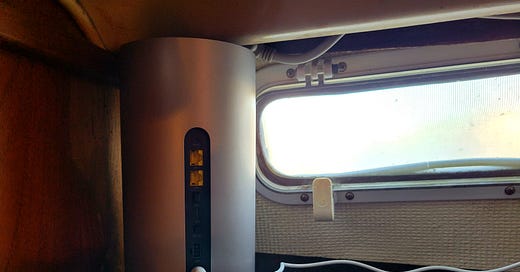Pssst...RV Rule-Breakers Are Loving T-Mobile Home Internet
Cheap 'Trash Can' Service Works Great But Not Meant To Move

Elon Musk’s Starlink satellite internet system is grabbing all the attention at the moment, but I’m seeing a much cheaper option for domestic cruisers that offer…
Keep reading with a 7-day free trial
Subscribe to LOOSE CANNON to keep reading this post and get 7 days of free access to the full post archives.


